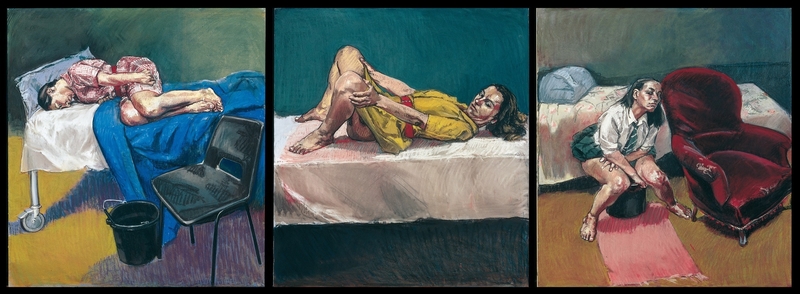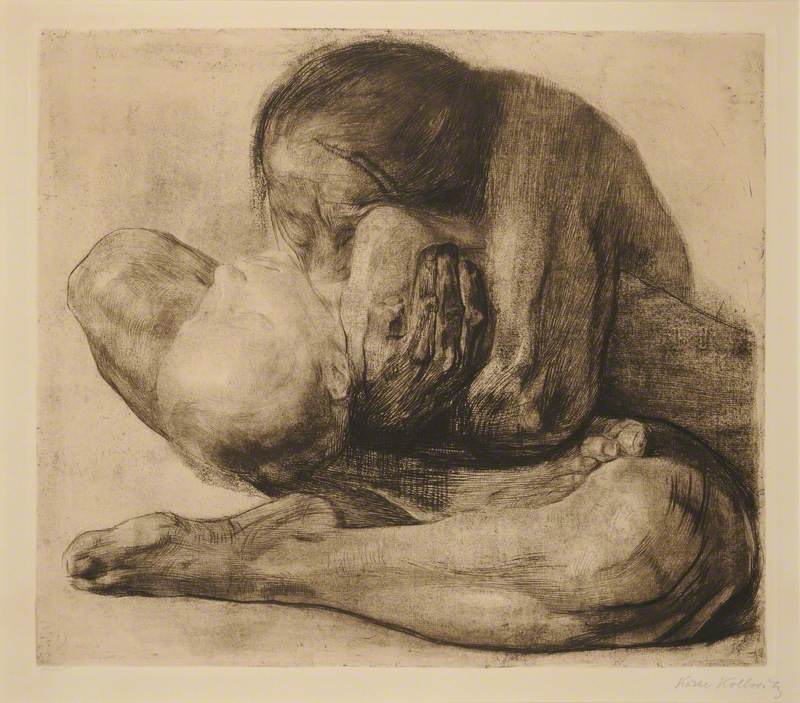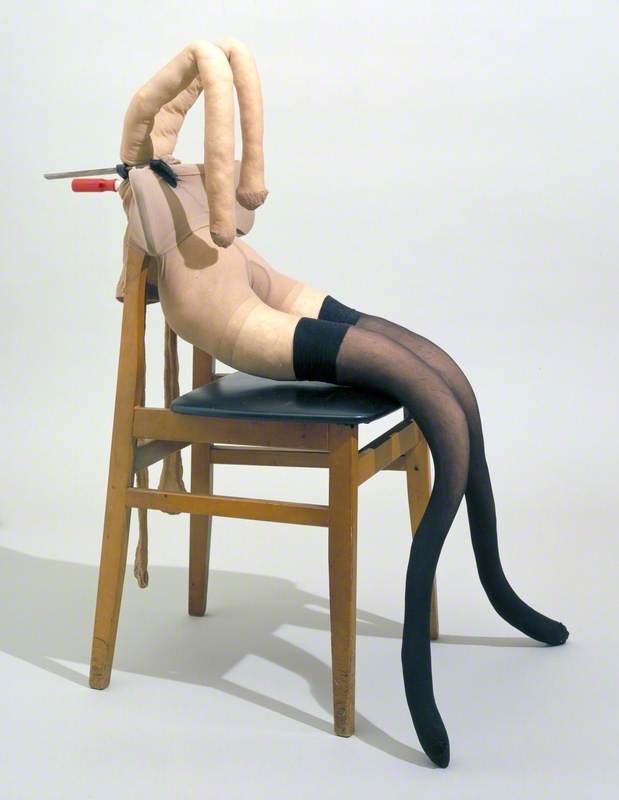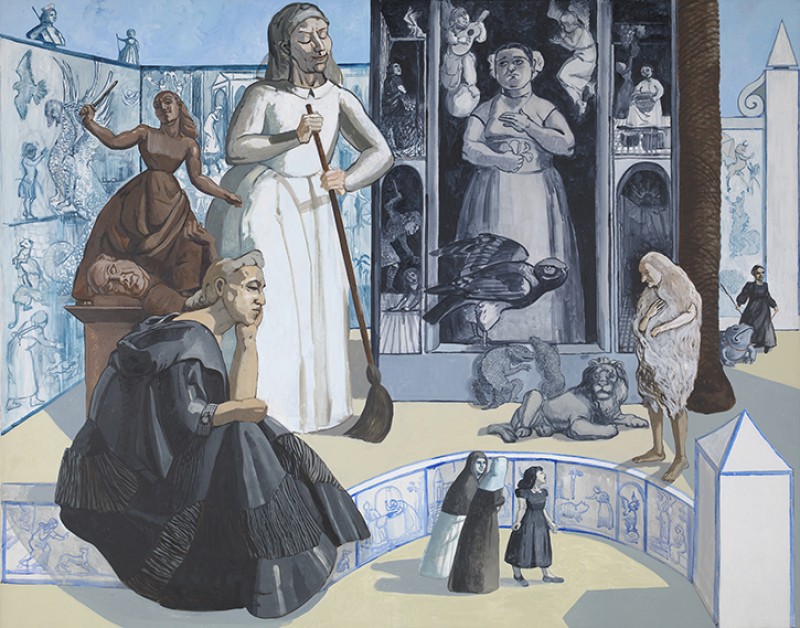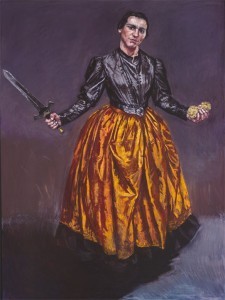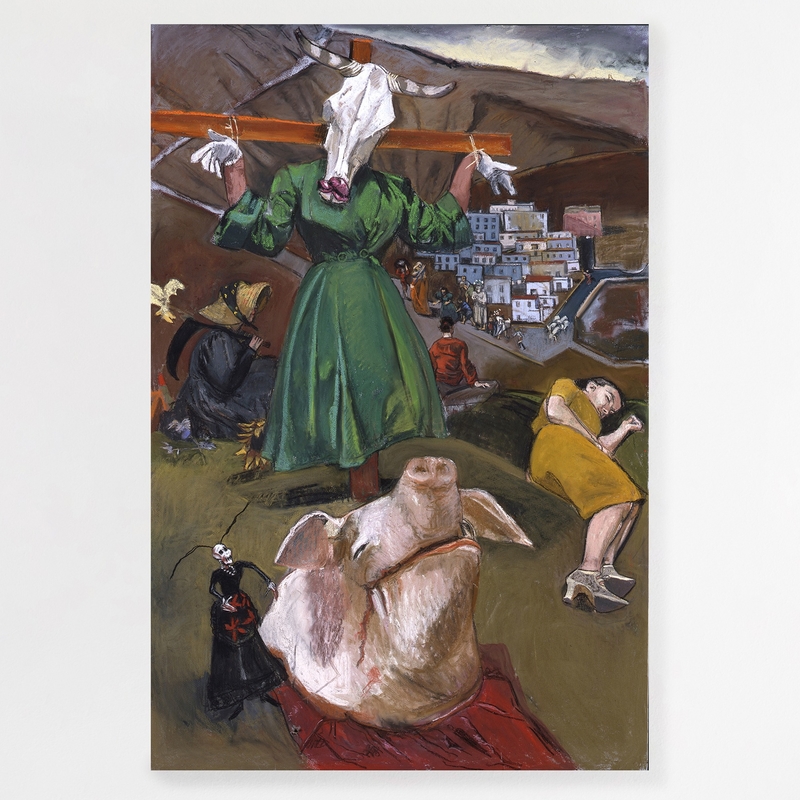This essay was written for the 2024 Write on Art prize, winning second place in the Year 12 & 13 category.
Three women lay or sit, contorted in visceral suffering. A menacing shadow oozes and creeps out from under three beds; urgent mark-making evokes a violent turbulence that makes the ground appear to tremor with unsettling expectation. The presence of two empty chairs emphasises the women's stifling isolation: the walls seem to predate on this solitude, bowing towards the women in the sinister shades of a vast and perilous ocean.
And yet, the women stare defiantly at the viewer. Despite the circumstances, this is not a depiction of vulnerability, but instead a triumph of self-preservation and autonomy. Although the women are the subject of the composition, they do not take on this role passively; they clutch their legs and clothes with a stoic self-possession, ensuring that the exposure of their bodies remains theirs alone. This piece is not an expression of shame, but of ownership and privacy.
Paula Rego created this picture in response to the failure of the 1998 Portuguese referendum to legalise abortion. Rego set out to illustrate the pain, fear and danger of illegal abortions – a circumstance that becomes inevitable when a safe option is criminalised. Currently, an estimated 45 per cent of all induced abortions are unsafe, a statistic that Rego herself fell victim to when the law prohibited her access to a reliable option. This option offers so much more than medical safety. It represents a freedom to openly dictate the decisions that affect one's body, mind and future: freedoms that should not be a luxury, but a necessity. However, abortion continues to be treated with ignominy, made excruciatingly clear in the hauntingly empty chairs and pronounced isolation of the women depicted. The title of Rego's series 'Untitled' alludes further to the forced anonymity – the silencing – of the realities of abortion that ensures that an inevitable shame is perpetually connoted to it.
The formation of three women, depicted on separate sheets of paper, recalls the tradition of religious triptychs: a tradition that Rego visits in her 1999 Martha, Mary and Magdalene. In that piece, Rego reimagines the stories of three female saints, which draws a poignant comparison through the portrayal of the women from Triptych – women who have had to secretly subject themselves to extraordinary suffering because their expression of autonomy is not deemed acceptable – alongside religious deities that supposedly epitomise standards of emotional and sexual purity. This comparison presents a fierce critique of the religious and societal views that condemn abortion: it undermines the presumption that abortion results in any sacrifice of dignity or purity. Rego has captured the women in a moment of hardship through which they are valiantly persevering, not in opposition, but comparable to those tales of suffering that permeate religious teachings. With each violently expressive stroke of pastel, Rego undoes this traditional narrative and gives these women, and women everywhere, a story in which they are not villainised or shamed, but instead given the space to share their experience and be received with empathy and sensitivity.
However, Rego's compassion is atypical; the 2022 overturning of the Roe v. Wade ruling in the US has left 22 million women of reproductive age without adequate abortion rights. In 22 countries, abortion is strictly forbidden, and in a further 90 countries, rights are significantly restricted. Even in countries where abortion is available on request, attitudes of shame and indignity continue to pervade discourse. Therefore, it is imperative that Rego's pictures continue to be given a platform to illuminate experiences and adjust attitudes – reframing abortion as an act of autonomy for all, without exception.
Flora Dodd
Further reading
Focus 2030, 'Where do abortion rights stand in the world?', 2024
Ana Gabriela Macedo, 'Paula Rego's Sabotage of Tradition: 'Visions' of Femininity', Luso-Brazilian Review, University of Wisconsin Press, vol. 45, no. 1, 2008, pp. 164–181
